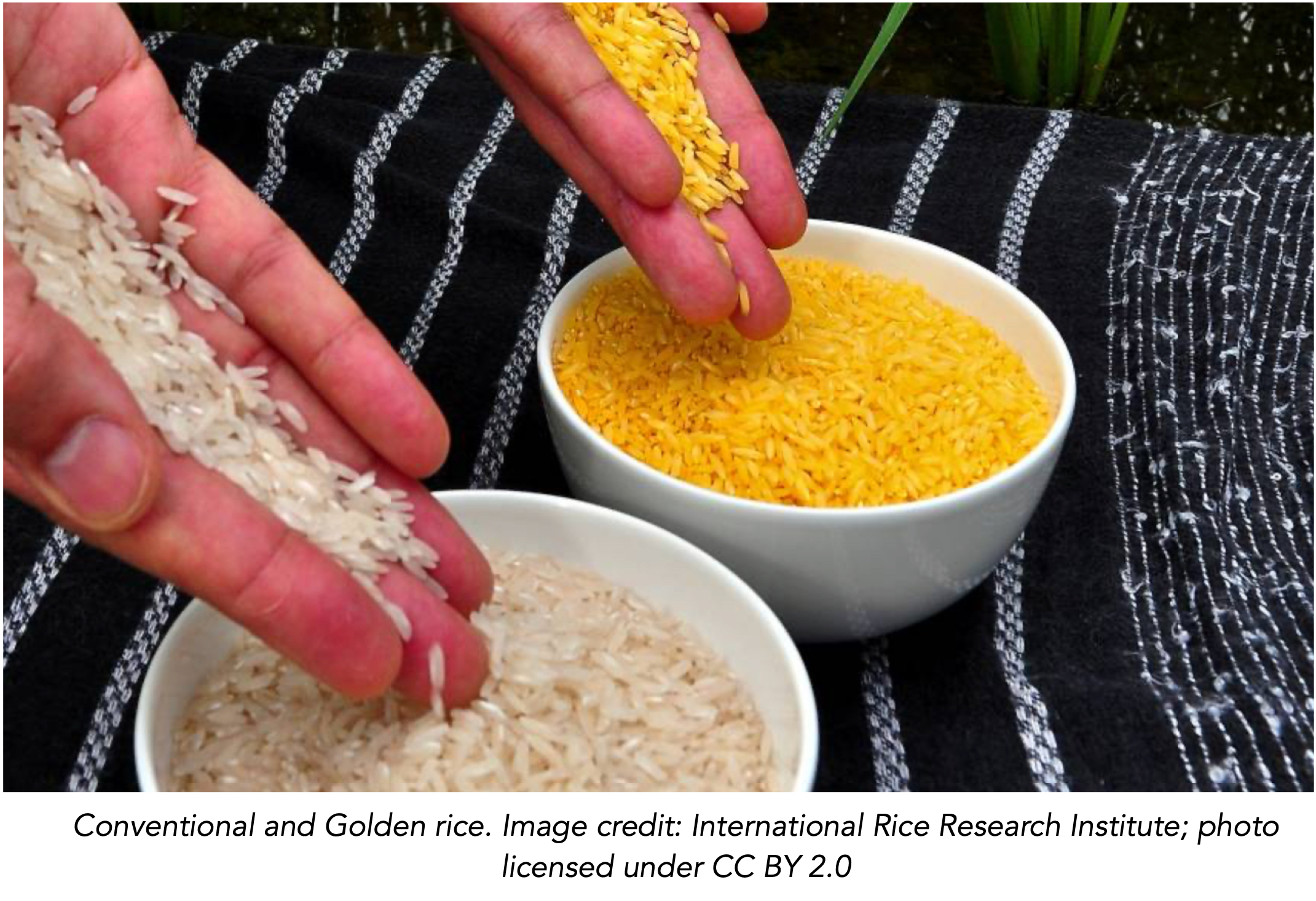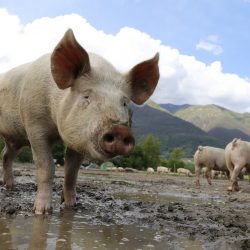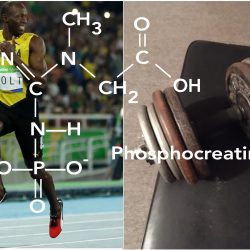UPDATED
The important micronutrient Vitamin A
The first vitamin deficiency was identified toward the end of the 19th century by Dutch medical scientists in the Dutch East Indies, today’s Indonesia. They discovered that a lack of the vitamin we call thiamin, or vitamin B1, caused beriberi, a deadly neurological disease. More vitamins were discovered subsequently, and by 1950 there was a list of 13 that are essential for humans. One of these, the ‘fat-soluble’ vitamin A, proved to be an ‘anti-infective’ agent; it reduced infections in new mothers. In 1932 it was shown to also reduce childhood deaths from measles in pre-vaccine England. In the early1980s, vitamin A deficiency (VAD) was discovered to be causing the deaths of children, also in Indonesia (this re-discovery is described here). Today, VAD is a major concern in India, Bangladesh, the Philippines, other countries in South and South-East Asia, and Africa, as well as in Indonesia.
There are two known roles for vitamin A. Firstly, it was identified in the 1950s as essential for vision, where it contributes molecules required for the visual mechanism. An insufficient level of vitamin A in the diet leads to a loss of night vision, and eventually to complete blindness in children. But, as discovered in Indonesia, VAD can also lead to death in young children from infectious diseases, because vitamin A is essential for development of the immune system.
The problem of VAD is distressingly large: the World Health Organization estimates that some 100,000 children die of it each year. The problem is particularly acute in countries where rice is the primary source of nutrition, because conventional rice contains no source of the vitamin A precursor beta carotene.
Solutions for VAD
There are two conventional types of sources of vitamin A. The vitamin itself is only found in animals, and food from animals often contains it. Its precursor, beta carotene, is found only in plants, including orange sweet potatoes, carrots, butternut squash, romaine lettuce and spinach. The orange or yellow ones are particularly rich; beta carotene imparts the colour. Vitamin A itself can be toxic, if too much is ingested (don’t eat polar bear liver!). But the body only converts beta carotene to vitamin A if vitamin A is at a low enough level. The conversion is self-regulating, and beta carotene is not toxic, no matter how much is eaten (your skin may turn yellow, but you’ll be fine).
In places where vitamin A, or its beta carotene precursor, is deficient in the diet, it can be provided by vitamin A capsules. These cost only pennies to manufacture, but unfortunately, dollars to distribute. And although capsules have reduced the magnitude of VAD in the world, they are of limited efficacy because universal distribution in the developing world is impossible.
A balanced diet is the ideal solution for VAD, and in the advanced world, the normal diet provides sufficient vitamin A. And even if the rest of the diet is deficient in beta carotene, a single food such as the orange-fleshed sweet potato is a good source of beta carotene, and thus vitamin A, and in some countries in Africa it is being developed for this purpose (there’s a post about this earlier).
A good diet, beta carotene-rich foods, and vitamin A capsules are not sufficiently available, however, to address the need for vitamin A in some parts of the developing world. A balanced diet containing sufficient levels of Vitamin A, or beta carotene, is not available in much of the world, and will not be for a long time. It’s too expensive. And beta carotene-rich foods such as the orange-fleshed sweet potato, although they are effective are not going to replace rice in the rice-dependent world. That’s because rice yields by far the highest level of food energy per acre of cereal crop, and it’s necessary to grow rice to obtain enough nourishment there. And vitamin A capsules, while effective, simply do not reach much of the vitamin A-deficient world. What is needed is a nutritional source of beta carotene in the places where rice is the staple food.
Another kind of solution
A natural, beta carotene-containing rice would be a solution to VAD. Unfortunately, no such strain of rice has ever been found, despite decades of effort. The rice genome does contain the genes required to produce beta carotene, and it is, in fact, produced, but only in the green parts of the rice plant. The metabolic pathway for beta carotene synthesis is incomplete in the rice grain, and therefore the rice we eat has none of it.
In 2000, two German scientists created a genetically modified form of rice that contains all of the enzymes necessary to produce beta carotene in the grain. The scientists, Ingo Potrykus and Peter Beyer, introduced three genes from other organisms into the rice genome: two from the wild daffodil, and one from a bacterium. These structural genes were under the control of the rice genome. The resulting yellow rice was soon being called Golden Rice, GR.
The problems of GR
The inventors of GR were initially hailed as heroes, and their effort was indeed heroic. But then the reaction set in. The reason for the push-back, of course, was that Golden Rice is a genetically-modified organism, a GMO, to which there is a lot of resistance.
In addition to the problem posed by its genetic origins, the initial GR produced too little beta carotene to be useful for human nutrition. The latter problem was solved by introducing more effective genetic modifications, and by conventional cross-breeding with rice being grown in the countries targeted (such as the Philippines). The new isolates are genetically almost the same as the crops being currently grown, and produce beta carotene in sufficient quantity to be a solution for VAD.
Another potential problem of GR involved cost and access to it, but this was solved by discussions between the Biotech firms holding the patents for GR, and a newly-formed GR Humanitarian Board. These resulted in GR being made available at no cost to agricultural research institutes, and eventually to farmers who earn less than $10,000 a year growing it. Such farmers, of course, are exactly the people who requires it to feed their families. And harvested GR could be used as seed.
The reaction to GR
In 2013, a group of about 400 protesters showed up at an agricultural research station where GR was being adapted for local use in the Bicol region of the Philippines. The workers at the station were expecting to discuss the protesters’ concerns. But about 30-40 broke away and began to trash the fields of GR. The vandals claimed to be farmers, but the research station workers could see that they weren’t; they were ‘city boys and girls’, recruited by an extreme left-wing political group and bused in. Farmers in the protest group did not take part in the destruction of the GR plot; they stood back, respecting the traditional belief that destruction of a living crop brings bad luck.
Despite active opposition, the government of the Philippines gave permission to plant and consume GR in 2021. Victory. But then a counterstroke: the opponents of GR, including its arch-opponent Greenpeace, convinced the Philippine Court of Appeals to issue a ruling that forbade the growth, testing, or importation of GR on April 21, 2023. And there the matter sits, awaiting further appeal. The ruling against it cited the potential risks to the environment and health of consumers. The Court found that the GR opponents had shown that the adverse effects of GR (and a GM eggplant that resists insect pests) were plausible, although uncertain.
The reaction of Greenpeace to GR (and other GMO agricultural plants) will, one hopes, eventually be seen even by that organisation as tragic. Greenpeace has a wonderful early record since its formation by the Canadian ecologist Patrick Moore in 1971. It has opposed atmospheric nuclear testing, contributing to human welfare by a reduction in strontium-90 in the bones of children. It has opposed whale hunting and the clubbing of baby seals. It has contributed to an enhanced awareness of nature and the environment. But more lately it has also embraced irrational, damaging, positions, and as a result, its founder Moore has left the organisation in protest.
The wispy opposition to GR
GR has been repeatedly tested and found harmless to humans and other animals. So much evidence for its benefit has accumulated that since 2016, a group of 168 Nobel Prize winners, including scientists, economists, writers and winners of the Peace Prize, signed an open letter begging Greenpeace to stop ‘bashing’ GR.
A research paper in 2023 (Goodman, GM Crops and Food, Vol. 15, No. 1, pp 40-50) concluded that after 28 years of existence for GM foods:
Regulators in the United States and countries signing the CODEX Alimentarius and Cartagena Biosafety agreements have evaluated human and animal food safety considering potential risks of allergenicity, toxicity, nutritional and anti-nutritional risks. They consider risks for non-target organisms and the environment. There are no cases where post-market surveillance has uncovered harm to consumers or the environment including potential transfer of DNA from the GMO to non-target organisms. In fact, many GMOs have helped improve production, yield and reduced risks from chemical insecticides or fungicides
Among the most important points raised by the GR opposition are these (a book I wrote about Vitamin A contains a longer description of the pros and cons of GR).
- GMO foods contain novel allergens and toxins and are dangerous to human health.
FACT: Several thousand peer-reviewed studies have failed to identify any hazard to the health of humans or other animals. The potential products of GR have been scanned and compared to a list of potential allergens; no matches were found.
- GR is a mechanism for agribusiness to profit from the efforts of farmers.
FACT: Use of GR seed is free in the developing world, and harvested rice can be used as seed. Agribusiness has not been involved since 2004.
- GR will become a monoculture, and will drive out other food crops.
FACT: In the areas of concern, rice is already a heavily dominant crop. Replacing traditional rice with GR will not change this. As for rice varietals, the GR trait can be crossed into other local strains of rice.
- There are many cheaper solutions to VAD, including a balanced diet.
There aren’t. And dietary solutions are simply not available in those areas.
- Any/all GMOs are bad.
Some may be bad, some are good, some are useless, some are useful. New GMO products must be tested for safety and efficacy, and they are. GR has been found to be safe and effective in providing Vitamin A. In other applications, GMO crops have resulted in less use of pesticide (as would be expected for the the rejected eggplant GMO in the Philippines, for example), greater profits for farmers, and increased crop yields (for example, by cotton-growers in India).
- The Greenpeace website says, “It is irresponsible to impose Golden Rice on people if it goes against their religious beliefs, cultural heritage and sense of identity, or simply because they do not want it.”
FACT: It would be. But there’s no obvious way to force someone who doesn’t wish to grow it to do so.
- Human DNA will become contaminated by DNA for the GR trait.
FACT: This is nonsense. We already eat a spectrum of DNA-containing foods, including foods containing the GR trait. It does not show up in our DNA, nor should we expect it to.
- Gluten disorders have been linked to food GMOs.
FACT: There are no peer-reviewed publications showing this.
- The introduction of Golden Rice will play havoc with export markets.
FACT: There would be no reason for a large-scale grower (the only kind that would want to export rice) to use Golden Rice, which is intended for local use.
In summary
The Appeal Court decision to stop the use of GR was a blow to the effort to provide it to rice-growing Philippine farmers. In response to this decision, the head of Greenpeace Philippines was reported as saying:
“Farmers who brought this case with us . . . currently grow different varieties of rice, including high-value seeds they have worked with for generations and have control over. They’re rightly concerned that if their organic or heirloom varieties get mixed up with patented, genetically engineered rice, that could sabotage their certifications, reducing their market appeal and ultimately threatening their livelihoods.”
To which replied Dr. Gurdev Khush, who as head of the International Rice Research Institute spearheaded the development of more than 300 rice varieties used in Asia, Africa, and Latin America, and whose work has been recognized by more than half a dozen international awards and honorary degrees from a dozen universities:
“The population of the Philippines was 30 million during the 1960s, and farmers used to grow low-yielding heirloom rice varieties. Now, the population of the Philippines is 120 million, and farmers have switched to growing high-yielding rice varieties, which produce 3-4 times more rice.
“Since farmers no longer plant heirloom varieties . . . [there is not] any program for certification of heirloom varieties.
“There are no organic rice varieties either. Any variety, whether heirloom or high-yielding, if grown without fertilizer and pesticides, produces organic rice.
” . . . Moreover, it should be emphasized there is no patent on golden rice, and farmers can grow golden rice without paying extra fees.”
The opposition to GR is based on, I would maintain, misguided values held by its proponents, not on science. While it continues, children die. The WHO estimates about 100,000 a year, or 275 a day. Many of these children would be saved by eating Golden Rice, which produces good levels of Vitamin A in those consuming normal amounts of it. Its opponents should know better.




